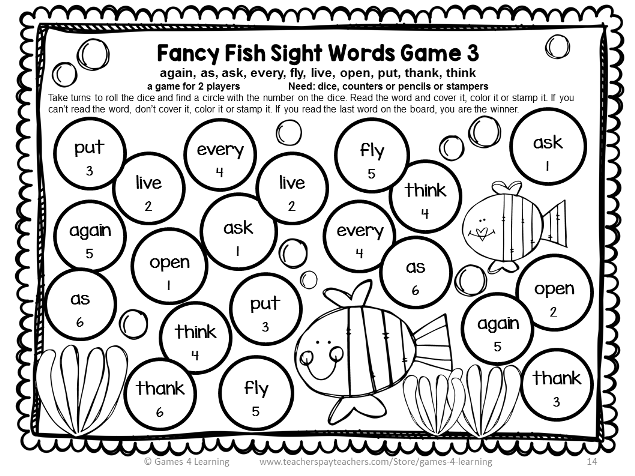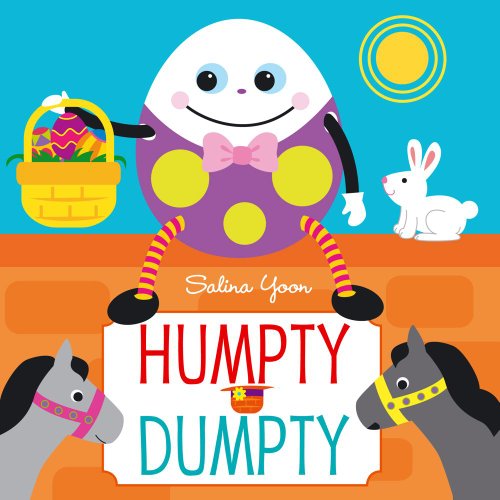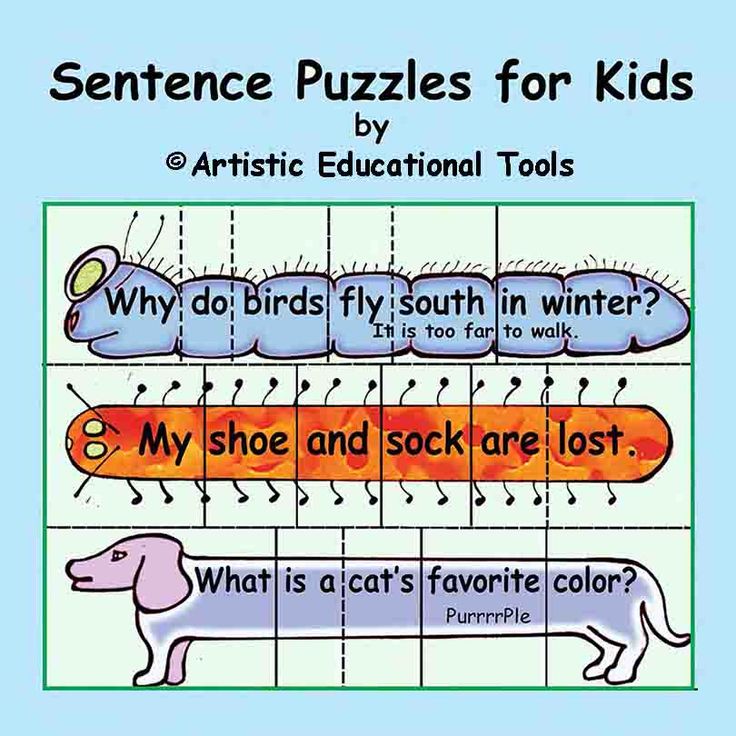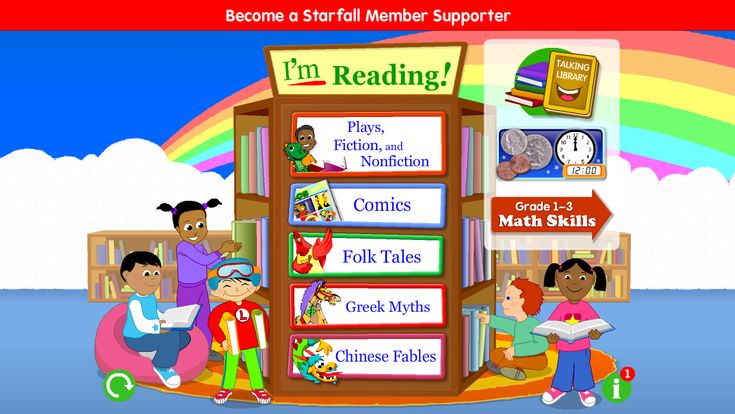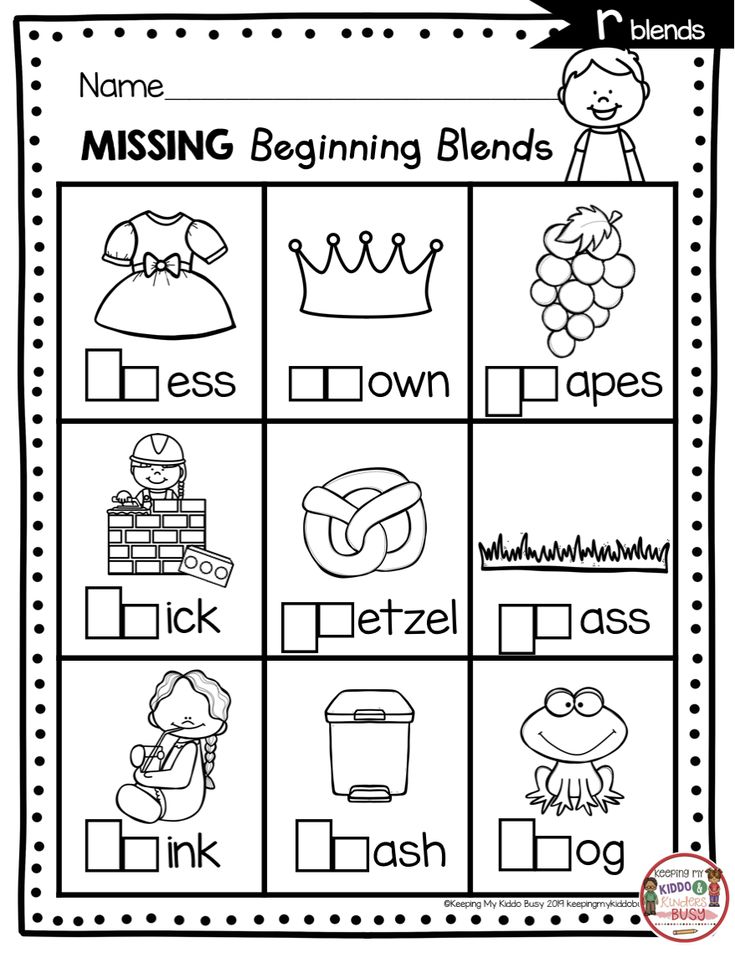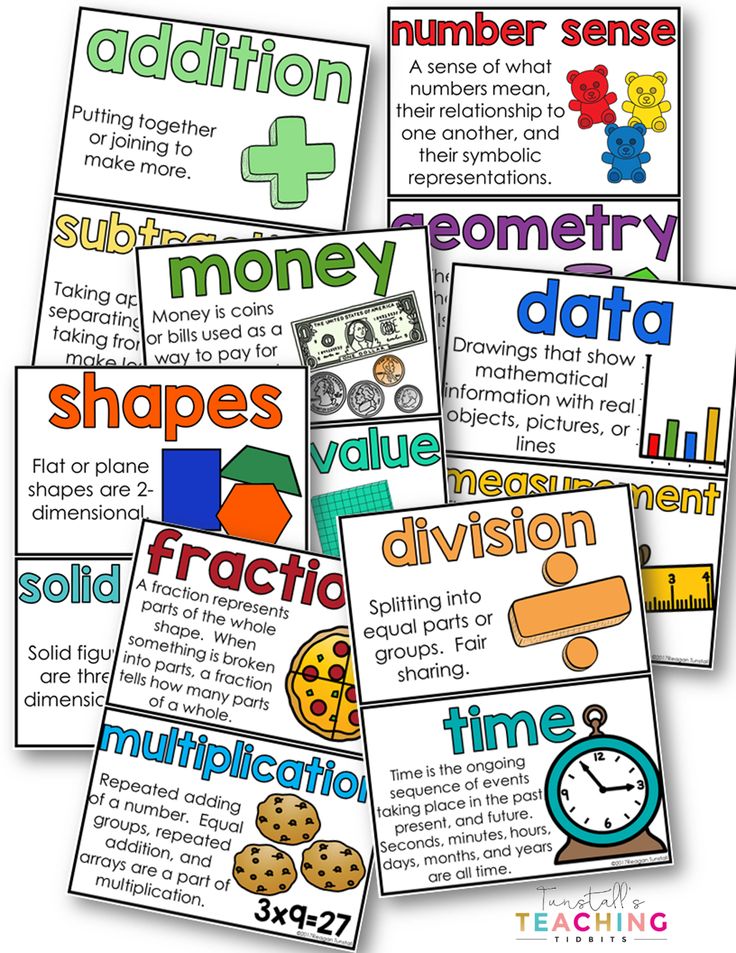Teaching feelings to children
9 Ways To Teach Children About Feelings
I often tell my children to use their words when they are upset. I assume they know what they are feeling and can verbalize it to me. Wrong! It’s difficult for children to say what they are feeling because many times they don’t know what to name the feeling they are experiencing. Instead, they show us how they are feeling by throwing temper tantrums and having meltdowns. We first need to teach children the words to express their feelings before we require them to “use their words.”
Young children can be taught basic emotions such as happy, mad, sad, and scared as early as two years old. As they get older, you can explain emotions such as feeling frustrated, nervous, shy, etc. to them.
Here are some ways you can help your child learn the language they need to express their feelings:
1. Sing songs to help young children learn how to express their feelings. I came across this version of a preschool classic, If you are happy and you know it at Sunflowersstorytime. com. It goes:
If you’re happy and you know it clap your hands.
If you’re surprised and you know it say “Oh my!”
If you’re sad and you know it rub your eyes “Boo hoo”
If you’re scared and you know it shiver and shake.
If you’re sleepy and you know it close your eyes.
If you’re angry and you know it stomp your feet.
And always make sure end up with “happy” again.
They suggest having pictures of each emotion to show the kids as they sing the song.
2. Use games and activities to teach children about feelings.
Children like learning through playing and having fun. A fun game to help kids learn about feelings is Feelings Charades.
For this game you will need to make a feelings cube. Paste pictures of feeling faces on a tissue box. Have kids roll the box and whatever feeling face it lands on they have to act out.
You can find free feeling picture cards here.
You can also use the cards to play Memory. Simply print out two sets of Feeling Cards, shuffle them and then have your child find the matching Feelings Card.
3. Watch kid-friendly videos about feelings. Kids respond well to visual stimulation. Here are two videos I like to show kids to help them learn about feelings:
- Elf Feelings Video
- The Feeling Song
4. Get into the habit of labeling the feelings you believe your child is experiencing. For example, if your child runs up to you and hugs you as you walk through the door, you can say something like “someone is excited to see me” or “someone is happy I’m home.” Labeling your child’s feelings as they happen helps them to build their feelings vocabulary.
5. When you read to your child, discuss how the characters in the story are feeling.
Point out any clues that lets you know what they are feeling such as facial expressions or behaviors. Then explain to your child why the characters feel the way they do. If your child is able to, let them take a turn identifying how the characters are feeling and why.
Then explain to your child why the characters feel the way they do. If your child is able to, let them take a turn identifying how the characters are feeling and why.
I like to read The Way I Feelto young children because it uses beautiful images to describe a range of feelings.
6. When your child does something that upsets someone else, let them know how their behavior might make others feel. For example, “When you called your sister names, she felt sad and her feelings were hurt. “ This will help your child be mindful of what they say and do to others. You can follow up by asking how they would feel if someone did the same thing to them. Encouraging your child to put themselves in someone else’s shoe teaches them how to be empathetic. Empathy is an important life skill that will allow your child to maintain positive relationships with other people.
7. Model appropriate ways to express feelings to your child.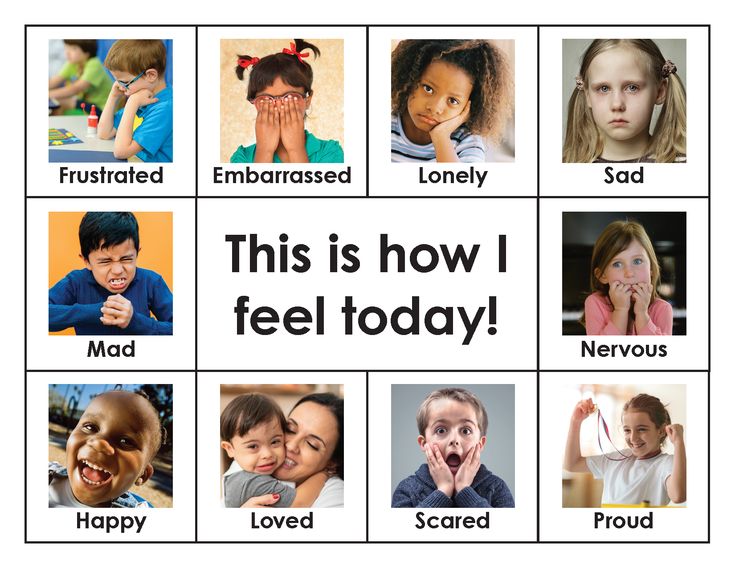 Children are always watching us and like sponges they soak everything up. Good and bad. If your child sees you expressing your feelings in a positive way, over time they learn to do the same. However, if they see you yelling and throwing things when you get upset, they are more likely to mimic this behavior.
Children are always watching us and like sponges they soak everything up. Good and bad. If your child sees you expressing your feelings in a positive way, over time they learn to do the same. However, if they see you yelling and throwing things when you get upset, they are more likely to mimic this behavior.
8. Teach your child appropriate ways to express their emotions.
It’s important that children learn that it is OK to have their feelings. What matters is how they express them. When your child is calm, discuss with them ways they can calm down when they are upset. The ABC’s of Calming Down is a great resource that contains 26 alphabetized calm down strategies to help children calm down.
9. Praise your child when they use words to express their feelings. Having the self-control to express your feelings appropriately is no easy feat. There are many adults who are unable to do this. When your child tells you how they are feeling instead of having a complete melt down, praise them for doing so. Be very specific. For example, “I like how you told your sister that you were sad when she called you names. That was very mature of you.” Praising your child for practicing good behavior makes them more likely to do it again in the future. It also lets them know that you are watching them and notice when they do good things.
Be very specific. For example, “I like how you told your sister that you were sad when she called you names. That was very mature of you.” Praising your child for practicing good behavior makes them more likely to do it again in the future. It also lets them know that you are watching them and notice when they do good things.
It is important that children learn how to identify and express their feelings in an appropriate manner. Kids who are able to express their feelings are less likely to have meltdowns and temper tantrums. They also have an easier time making friends and getting along with others. For additional resources on teaching children about feelings, check out these Feelings Task Cards.
In what ways do you foster your child’s emotional intelligence?
If you like this article you might also like these articles. (Click on images)
7 Ways To Help Kids Understand Their Emotions
Teaching feelings can be a complicated business, especially for young children.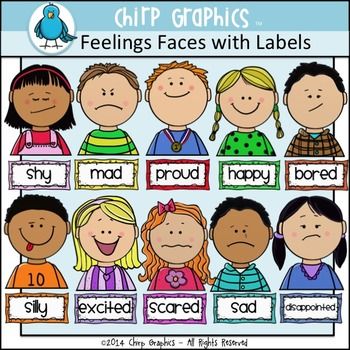 But it’s also one of the most rewarding parts of watching your child grow up, make friends, and form deeper bonds with the people around them.
But it’s also one of the most rewarding parts of watching your child grow up, make friends, and form deeper bonds with the people around them.
Teaching children about feelings helps them with so many essential tasks — communicating, learning about empathy, as well as understanding their own emotions.
The world of feelings is expansive, though. What feelings are most important for young children to understand?
Teaching Feelings Means Naming Feelings First
Preschool and kindergarten-aged children may feel the same emotions as older children, but that doesn’t necessarily mean they have the vocabulary to articulate those emotions in the same amount of detail.
It’s important for young children to start with learning the basic words to describe emotions. These are emotions they may feel daily or weekly:
- Happy
- Sad
- Scared
- Excited
- Angry
- Grouchy
- Surprised
The goal is for your child to be able to identify these emotions in themselves and others from facial expressions, body language, or verbal language.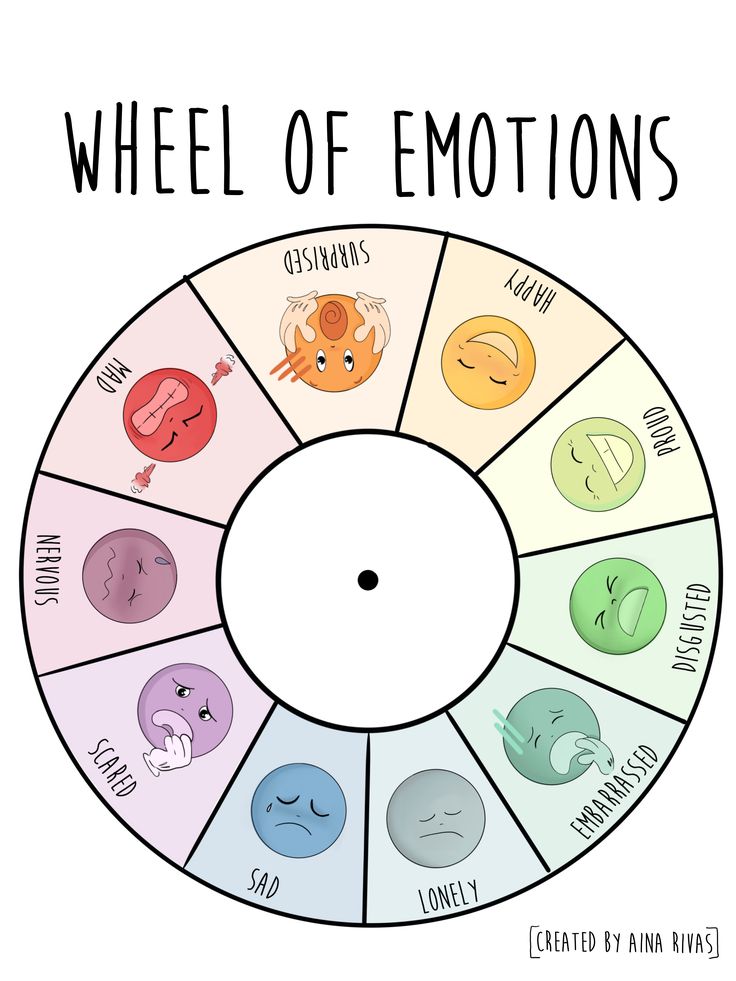
Since these emotions are basic, it’s important for children to have the vocabulary to say how they feel and to begin to understand how others feel.
Of course, this isn’t where a child’s range of emotions starts and stops. There are so many other feelings children can experience based on their environment or situations. Children may feel:
- Jealous
- Lonely
- Grateful
- Guilty
- Frustrated
- Relaxed
These feelings have a bit more nuance than the earlier list. They are more specific instead of general. For example, if your child feels sad, more specifically, they may be lonely.
Often, multiple emotions mix together to create these feelings (if you’ve ever seen Inside Out, think about the marbles made with a mix of happy and sad emotions).
Teaching kids about feelings can be complicated when you’re working with younger children who have a limited vocabulary. But there are numerous benefits to talking about emotions and how to process them from a very young age.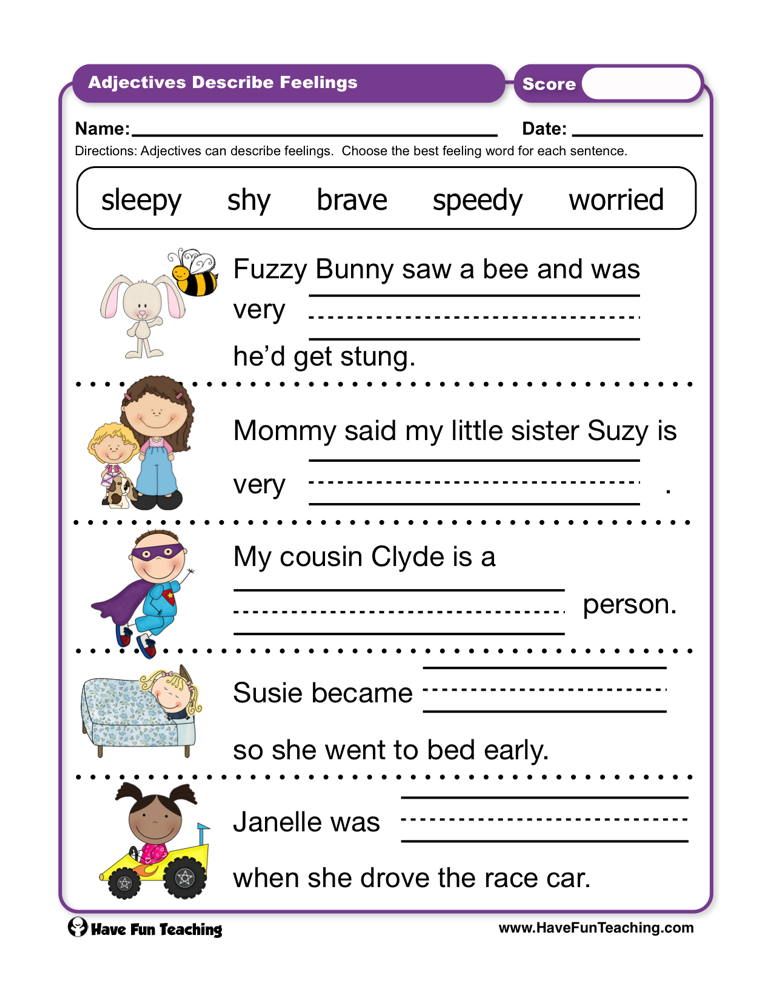
Let’s take a look at some of these below.
Benefits Of Teaching Children About Feelings
Teaching children about their feelings and how to manage them is essential for both their physical and mental wellbeing.
We all go through ups and downs in life, and understanding our feelings puts us in a better place to navigate obstacles in a focused, calm, and purposeful way.
When we talk about teaching children about feelings, we mean walking them through how to understand their full range of emotions.
This is a very important point because, as parents, we sometimes make the mistake of focusing only on happiness as an acceptable feeling to express.
Of course, we want our children to be happy. But focusing on this one emotion and not recognizing and acknowledging the others may unintentionally send the wrong message to your child. They may begin to believe that any other feelings are wrong.
Jealousy, sadness, anger, and other emotions are natural parts of our human experience. That’s why it’s essential to speak openly about different feelings so that children know how to identify them and aren’t afraid to express them in a healthy way.
That’s why it’s essential to speak openly about different feelings so that children know how to identify them and aren’t afraid to express them in a healthy way.
In addition to embracing different emotions as healthy and good, teaching children feelings can help with other parts of growth and development as well.
Here are a few additional ways that understanding emotions can benefit children.
Promoting Emotional Intelligence
Emotional intelligence can be referred to as “the ability to identify and manage one’s own emotions, as well as the emotions of others.”
An emotionally intelligent person has many great qualities, including self-awareness, self-regulation, empathy, and social skills.
While these qualities don’t develop overnight, the more you speak to your child about feelings and how to manage them, the more it helps your child increase their emotional intelligence over time.
Reducing Anxiety
Feelings like anger, frustration, and jealousy can be very intense for children (and adults!).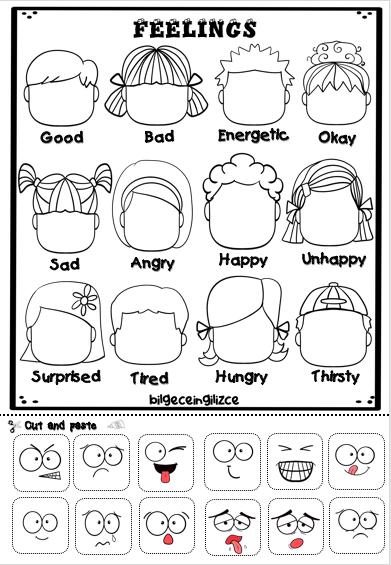 As we discussed above, we can’t shield our children from these emotions because they are a part of the human experience.
As we discussed above, we can’t shield our children from these emotions because they are a part of the human experience.
So, how can you help your child navigate them?
Talk to your child about what they’re feeling in the moment, and allow them to openly share what’s on their mind. Being a non-judgmental sounding board can create a safe environment and a teachable moment when your child needs it the most.
When kids learn not to fight their emotions, anxiety and stress can be reduced or eliminated.
Guiding Parents
As parents, it’s sometimes hard to tell what our children are going through deep down. Tantrums, defiance, or aggressive behavior are not always clear indications of the underlying problem.
While these behaviors are a normal part of growing up and processing emotions, they often occur when a child feels overwhelmed and can’t healthily articulate what’s going on in their mind.
But when your child is familiar with identifying different types of feelings and what they mean, they will have an easier time talking to you about whatever problem they might be having, and you’re more equipped to handle the situation.
When Should You Start Teaching Kids About Feelings?
Sometimes, parents delay teaching kids about their emotions because they think the language is too complicated to understand.
For example, how do you teach a two-year-old that their tantrum is not about wanting to stay home from school but, rather, from feeling overwhelmed or scared?
The reality is that emotions are ingrained in us from birth. Babies are content when they’re warm and fed; they are anxious if they feel abandoned because a parent turns away; they are scared when they’re hungry.
No one teaches us these feelings, but we often learn how to cope with or experience our feelings by watching others
Children observe the way we, as adults, communicate about everything, especially how we feel. By talking about our emotions in front of them, we can help them learn how to talk about their own feelings, too.
Another way to teach kids about feelings, especially younger children, is through reading.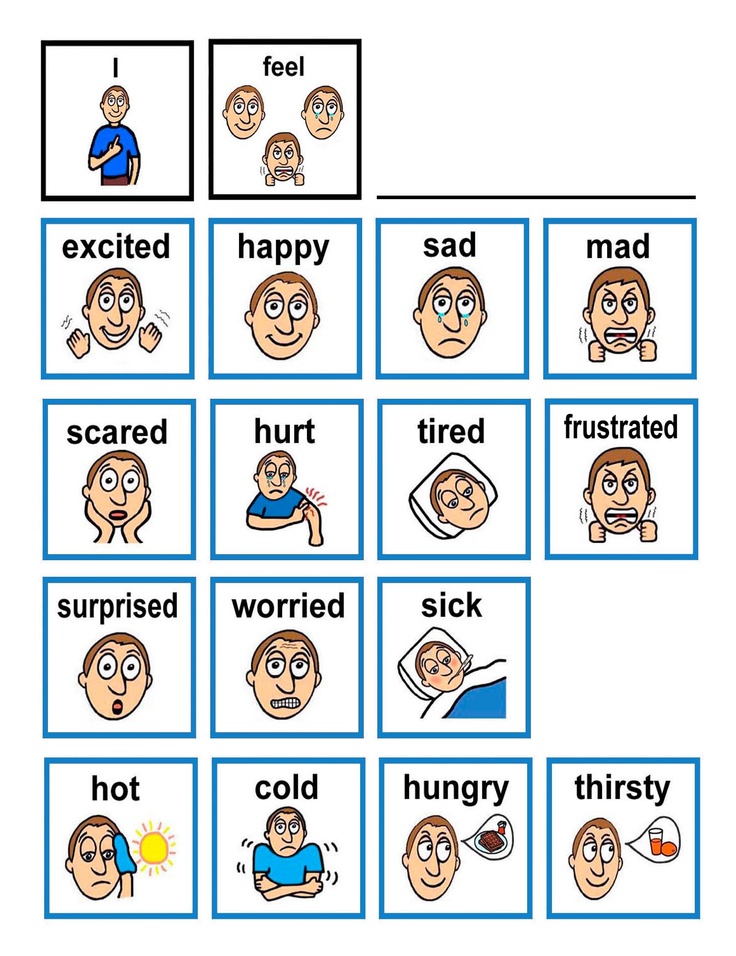 Here are some of our favorite books on this topic:
Here are some of our favorite books on this topic:
- My Body Sends A Signal (4-6 Years)
- Little Monkey Calms Down (2-4 Years)
- Making Faces: A First Book Of Emotions (1-3 Years)
- In My Heart: A Book Of Feelings (2-4 Years)
- Grumpy Monkey (3-7 Years)
Whether you use these books to introduce healthy emotions to your child or you simply talk to them about how they’re feeling, it’s important to start with simple emotions.
As your child gets more accustomed to identifying and expressing their basic feelings, you can move on to talking about more complicated feelings.
But how do you effectively practice identifying emotions with your child? Let’s take a look at some effective strategies.
7 Strategies For Teaching Feelings
1) Talk About Feelings In Media
Our communication with other humans is wholly dependent on our ability to communicate with one another.
This means that almost every piece of media your child consumes showcases feelings and conversations about them, which makes them great source material for learning!
During films, TV shows, or while reading, pause to ask your child how they think characters feel.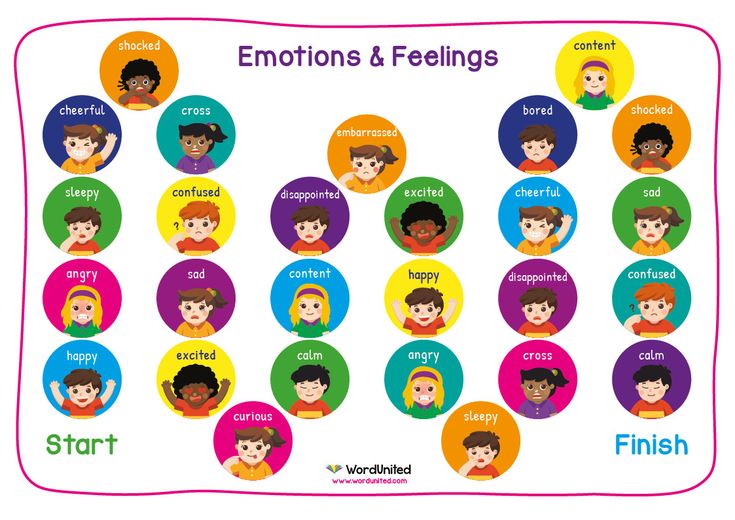 Propose different scenarios and discuss how those situations would impact feelings.
Propose different scenarios and discuss how those situations would impact feelings.
For example, if a character in a book was riding a bike, then fell and scraped their knee, you could ask your child to describe how they think the character felt at that moment. Talk about both what they felt and why they felt it.
2) Playfully Practice Identifying Feelings
It can be hard for young children to identify their own emotions and even harder for them to recognize emotions in others.
That’s why we recommend giving your child playful ways to link vocal tones, facial expressions, and body language to emotional identification.
Experiment by saying sentences with different emotional emphases. Your child will try to pinpoint exactly what emotion you’re trying to convey through a combination of facial expressions, body language, and tone.
For example, you could say, “It’s cold outside” in an animated, angry voice. Then, your child would try to guess your emotion.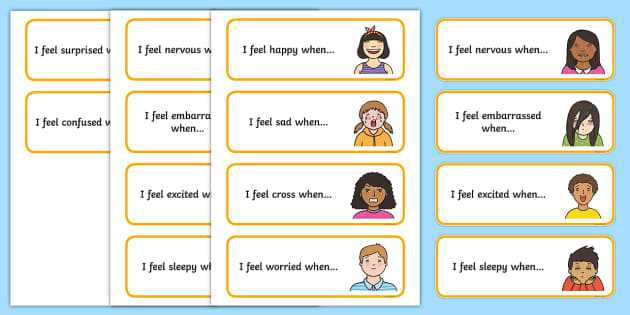 Repeat the words, but this time change the emotion — be delighted, or nervous, or bored.
Repeat the words, but this time change the emotion — be delighted, or nervous, or bored.
Let your child have some fun, too! Encourage them to say something in an emotional voice and let you guess the emotion.
This is a great activity to try while reading, as well. When you read a voice with an expression (“Give me my shoe!” in a loud, angry tone, for instance), ask your child if you had the best voice for the feeling, and then let them try saying what the character said.
3) Acknowledge Your Child’s Feelings
Managing so many feelings in one little body can get overwhelming sometimes (we know we’ve been there)! Part of teaching your child about feelings includes teaching them that feelings are perfectly normal.
This goes for positive and negative emotions. The best way to validate your child’s experience and feelings is to acknowledge them!
For example, if you watch a movie together that your child really loved, you could say, “Wow, I think that movie made you really happy because you laughed so much.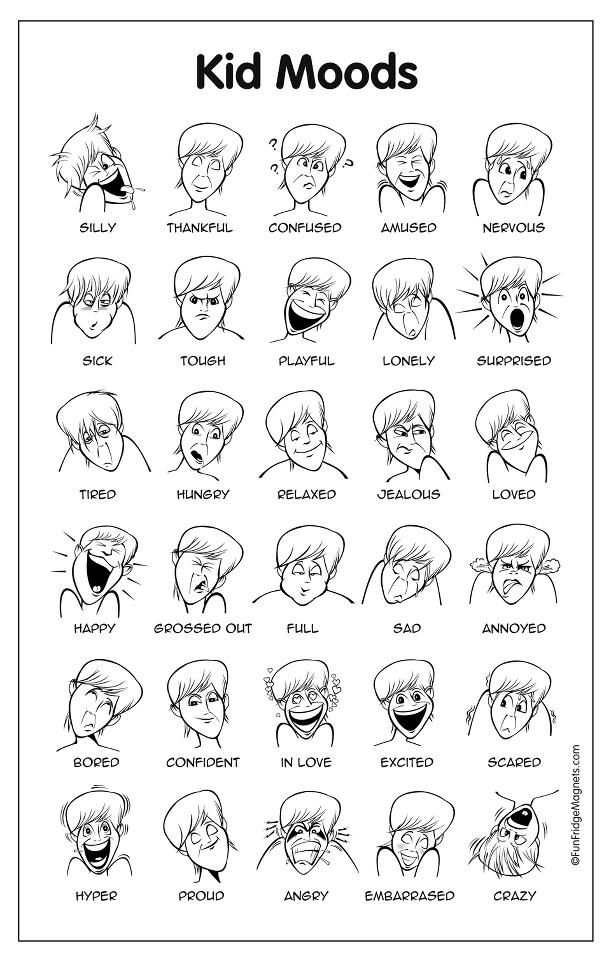 What was your favorite part?”
What was your favorite part?”
We know there will also be times when your child’s feelings of frustration can overwhelm them. If you notice them having a hard time, you could say, “You seem upset because you missed talking to Grandma today. I understand. What can we do to help you feel better?”
This open communication helps your child feel safe, heard, and reassured that their feelings matter.
4) Share Your Feelings And Memories
Emotions are closely linked with memory. Sometimes, playing with your child or doing everyday things at home together may stir up some childhood memories of your own.
This is great, and it’s an even better way to bond with your child and teach them more about feelings!
When you and your child are doing things together, share a memory of when you did something similar as a child.
For example, when eating, you could comment on how certain foods make you feel. “Your grandmother used to make this soup for me when I was sick, so it makes me feel happy, warm, and cared for. ”
”
You can also make this about how you feel in the moment. The point is to acknowledge your feelings honestly and openly with your child so they may learn to do the same.
Maybe you got snippy with your child while speaking earlier and want to apologize. This is a wonderful teaching (and bonding) moment.
You could approach them and say, “I’m sorry I got upset earlier. I am really sad Grandma isn’t here today, and I miss her a lot. I think that’s why I was in a bad mood earlier. I hope you forgive me.”
This shows your child several things:
- You acknowledge and respect their emotions
- You accept responsibility for causing someone else pain
- You acknowledge and respect your emotions
- You know it is important to communicate your feelings
These are all invaluable lessons for kids to learn!
5) Use Puppets Or Toys To Act Out Emotions
Sometimes talking about feelings can feel like an interrogation, especially for children who are on the shyer side. This is where puppet play can come in handy.
This is where puppet play can come in handy.
Use puppets to uncover more about what your child feels, as well as to teach feelings. Together you can act out different scenarios and discuss why the puppets might react in specific ways based on the circumstances.
If you think something may be bothering your child, you can use puppets as an indirect, safe mode of conversation.
You might even find that your child is more comfortable presenting their emotions through a puppet character rather than direct communication.
This is perfectly OK! It helps you learn more about their emotions, too, and gives you another opportunity to reassure your child that their feelings are nothing to be ashamed of.
6) Praise Emotional Language
When your child successfully and accurately describes their feelings, give them lots of positive affirmation. This applies to both their emotions and demonstrations of empathy toward others.
7) Teach Healthy Emotional Expression
Learning how to identify emotions is one thing, but how do children learn exactly how to communicate their feelings? This is where “I feel” statements are beneficial.
Teach your child that when they want to speak up about their emotions, they can start by saying, “I feel …” and filling in the blanks. This way, whoever is listening knows they are about to receive important emotional information.
When your child’s emotions are more intense and conversation isn’t the most accessible tool for them at the moment, encourage them to practice “mindfulness techniques.”
These are techniques to teach them to pay attention to their body and slowly release powerful emotions.
These mindfulness techniques include:
- Cuddling with something soft in a quiet room
- Playing with tactile items like PlayDoh
- Taking deep, “square” breaths (inhale, hold, exhale, rest)
Don’t be afraid to model yourself as an example!
Parents with healthy emotional expressions can teach their children first-hand that feelings are natural, powerful, and an important part of the human experience at any age.
Now that we’ve looked at the importance of teaching feelings to kids, let’s get into some effective activities you can use to practice identifying these emotions at home.
4 Activities To Teach Feelings
1) Story Stones
What You’ll Need:
- Rocks
- Acrylic paint (or sharpies)
What To Do:
The goal of this activity is simple: Use the paint to give each of the rocks a different face!
For example, your child could draw one rock smiling, one with a sad mouth, another one with a silly tongue sticking out, and another with a big surprised face!
Once your child has finished their masterpieces, allow the paint to dry and then take a moment to talk about the emotions on the stones. You can even have them pick up each stone and mimic the face they see while identifying the represented emotion.
Walk them through this activity by using easy-to-understand language and your own examples, such as:
This stone shows crying eyes. This stone is sad. I was sad when we moved houses because I loved our previous home. When I’m sad, I sometimes cry and feel down. Do you ever get sad?
This is a great way to give your child a visual representation of different emotions and encourages them to share when they may have felt that specific way.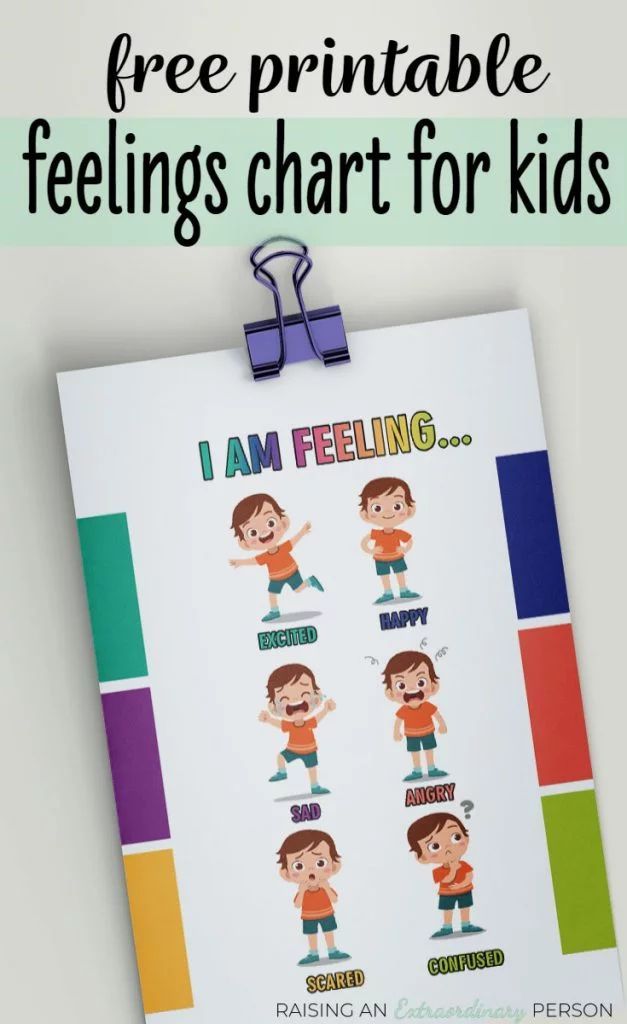
2) Paper Plate Emotion Masks
What You’ll Need:
- Paper plates
- Scissors
- A sharpie
- Popsicle sticks (or tongue depressors)
- Clear tape
What To Do:
Start by cutting your paper plates in half. Then, write different emotions on the back of each plate (e.g., happy, angry, silly, sad, etc.). For younger children who are just beginning to read, you can assist them with reading each word as you go.
On the front of the paper plates, create a face that represents that feeling. For example, if the mask has “sad” written on the back, then the drawing can be of a frown.
After making each face, hold the paper plates up one at a time and talk about what each of these emotions means. Again, make sure to use real-life, easy-to-understand examples so your child can grasp the concepts.
The last step is to tape popsicle sticks onto the back of the paper plates so that you have emotion masks. Your child can then share their own examples of each emotion while holding up the correct face.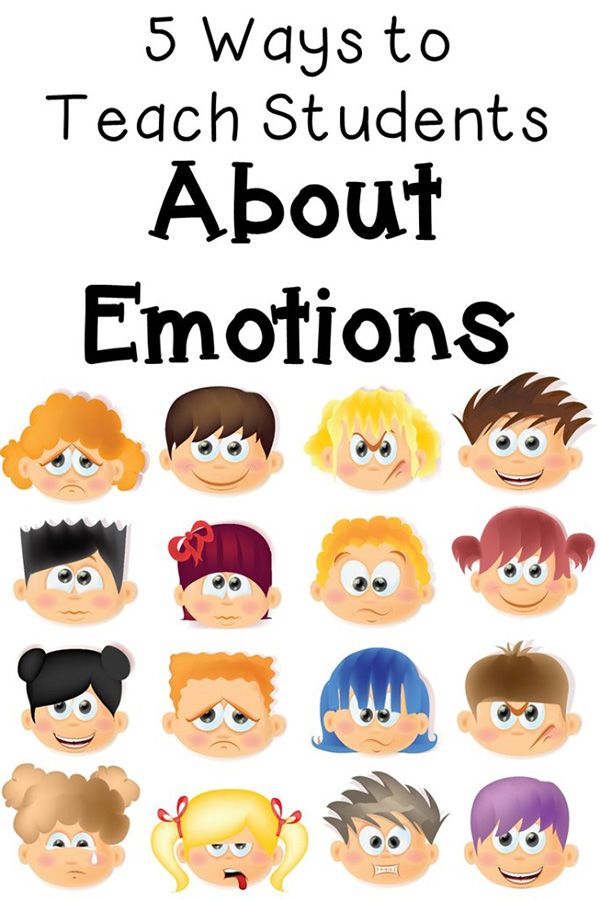
Similar to Story Stones, Paper Plate Emotion Masks are an excellent way to teach and discuss feelings with children visually. It’s also hands-on, which allows kids to be fully engaged as they learn about self-expression.
3) Emotional Charades
What You’ll Need:
- Small pieces of paper
- A marker
- A hat (or small bag)
What To Do:
As the name suggests, this activity is all about playing charades with emotions as the clues.
Start by writing different emotions on your pieces of paper, and then fold them and place them in a hat or bag. Next, have the first player pick one slip of paper, read it quickly to themselves, and act out that feeling. The other players then need to guess which emotion is being portrayed.
This activity is a fun way to introduce emotions to kids in a lighthearted manner. It also helps children grasp that one emotion can be expressed in different ways. For example, if the clue is “sad,” the person acting it out can have a sad face, or they can pretend to cry.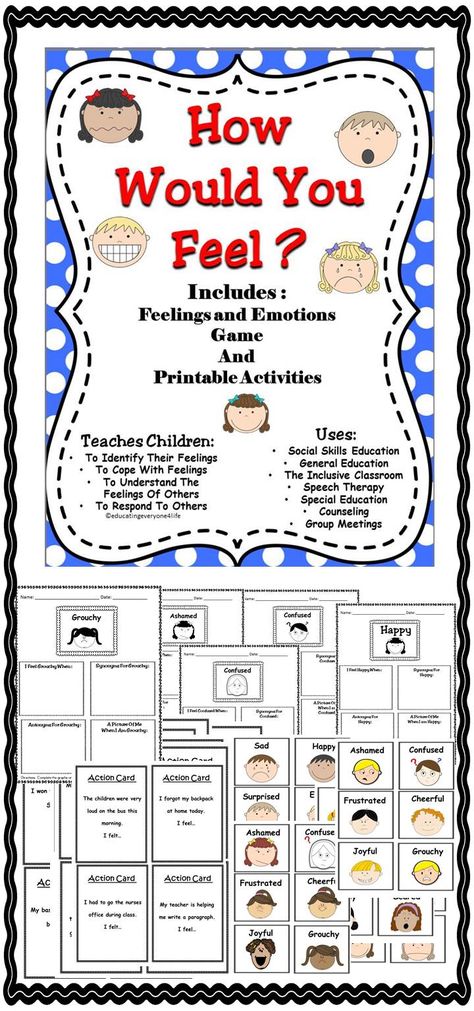
Tip: If your child hasn’t learned how to read yet, you can draw a simple image of the emotion under the word on each piece of paper to help them out.
If you have enough players, this can also be a great game to play with teams. The first team to get five points wins!
4) Emotional Musical Chairs
What You’ll Need:
- Chairs
- Music
- Index cards
- A marker
What To Do:
Musical chairs is a common game that brings lots of fun and laughter. If you’re not familiar with it, here’s a brief explanation:
Players start by standing around a circle of chairs. There should be one chair less than the number of players participating. (For example, if there are five players, there should be four chairs.)
When the music starts playing, the players walk around the perimeter of the chair circle. Once the music stops, each player rushes to find a chair to sit in, and the player left standing is out!
After this first round, remove another chair and continue repeating this pattern until you have a winner (one person left).
Emotional Musical Chairs is similar, except that each chair has a different emotion written on an index card attached to it. The number of chairs is equal to the people participating, which means that when the music stops, everyone will find a chair, and no one is out.
Here’s a breakdown of how emotional music chairs works:
- Players gather in a circle around the chairs marked with different emotions
- When the music starts, they start walking around the perimeter of the circle
- When the music stops, players quickly find a seat
- Each player then reads the emotion card they’re sitting on and gives a situation that made them feel that way. For example, if the emotion is “happy,” the player can say, “I feel happy when it’s Friday because that’s when we get pizza, and I love pizza!”
Using this fun activity, children get to share their understanding of each emotion while also moving around and burning off energy. It’s a great way to talk about feelings without making things awkward or uncomfortable.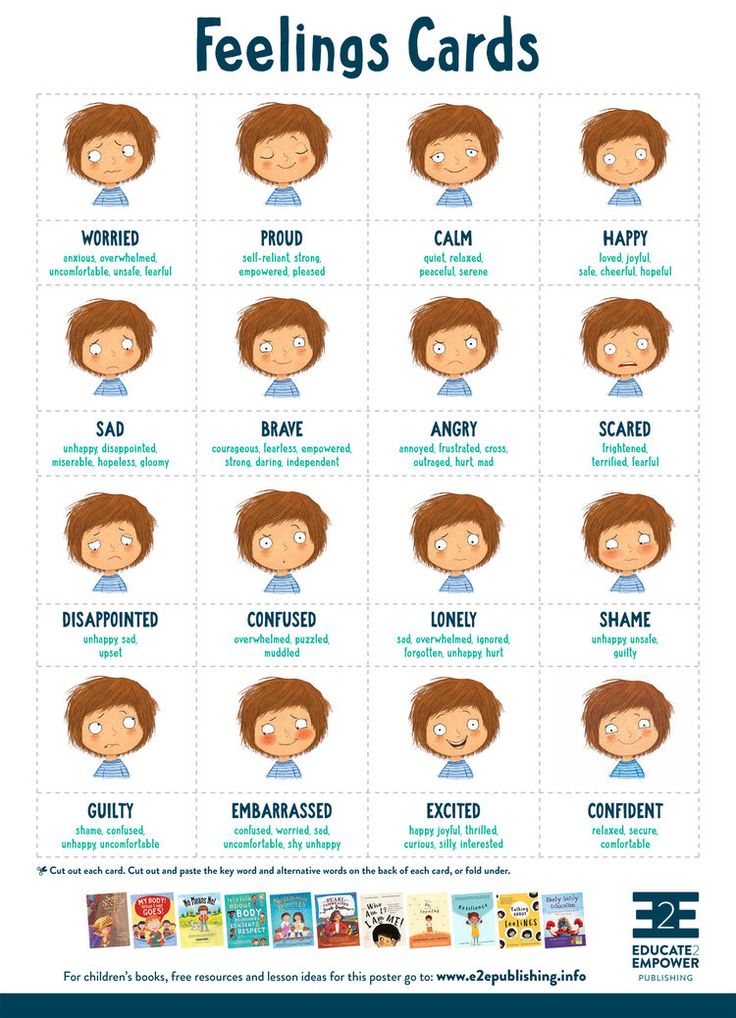
Reap The Rewards Of Teaching Feelings
Emotions are an inherently sensitive topic, which means teaching feelings to your child will take some time, patience, and practice. But we know that the payoff will be monumental to your and your child’s relationship, as well as their friendships with others.
There may be times when your child is hesitant to deep-dive into emotional conversations or activities. This is understandable — emotions are complicated!
The Learn with Sesame Street app is an effective tool that helps kids learn and develop their social and emotional skills. With the help of their Sesame Street friends, kids learn how to express their emotions, empathize with others, and create healthy relationships. Explore the Learn with Sesame Street app today!
Author
Emotions for children - we study feelings and emotions with children simply and clearly
We will introduce the child to the variety of human emotions, teach them to express their feelings and recognize the emotions of other people through exciting story games
Try for freeTry for free
Why should a child study emotions?
Better understand yourself
It is sometimes difficult for a child to even realize, and even more so to formulate what he wants now, what he feels, why he suddenly became uncomfortable.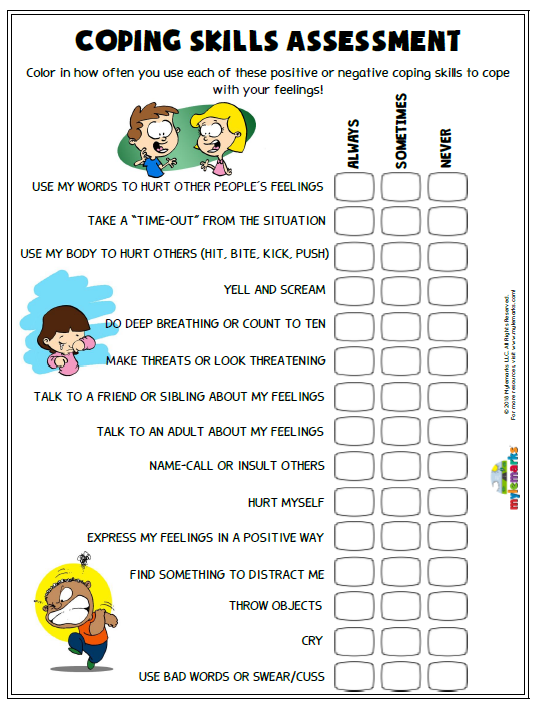 And most importantly, understand what to do with it. Knowing the emotion "in the face", the child will not be at a loss in front of her.
And most importantly, understand what to do with it. Knowing the emotion "in the face", the child will not be at a loss in front of her.
Manage your emotions
Emotions arise uncontrollably, but how to dispose of them is up to us. Even a brave person can be frightened, but at the same time one will cry and hide, while the other will look fear in the face and defeat it. And this is exactly what you should learn from childhood - otherwise you won’t become successful.
Communicate more effectively with people
For productive communication, it is important to be able not only to recognize the emotions of others, but also to correctly express your own. Many will prefer to deal with a calm, friendly interlocutor, and not with a closed beech or a person who expresses his feelings too violently.
Protect yourself from manipulation
Each of us hides our true emotions in some situations.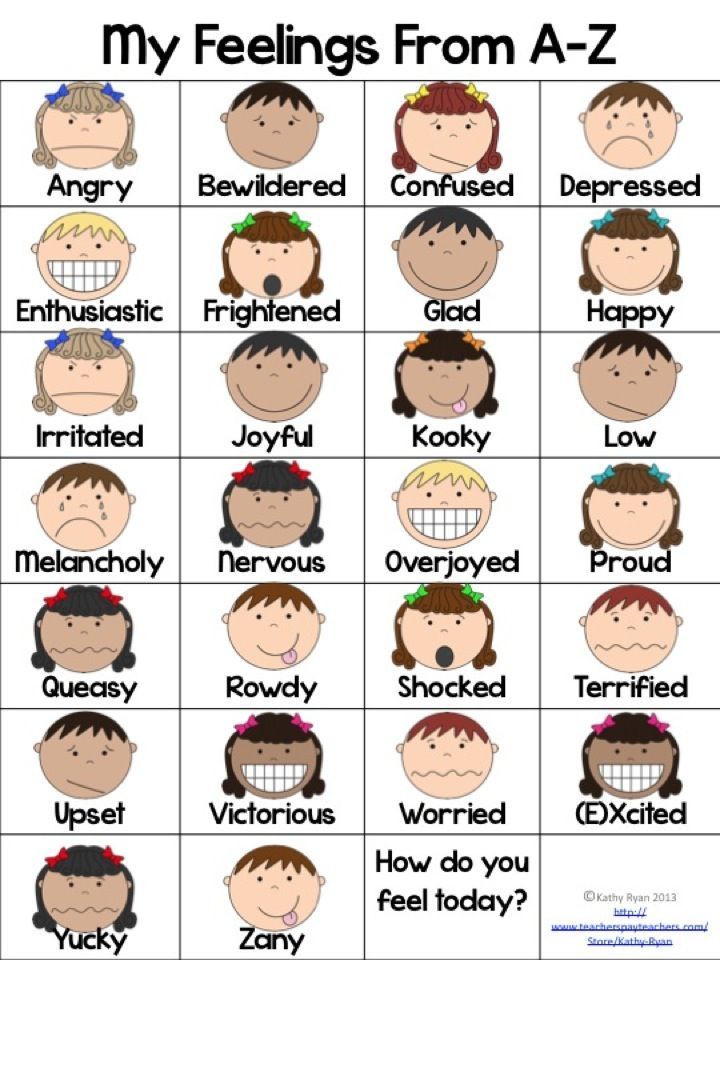 Sometimes it's a matter of etiquette. But sometimes people can pretend to benefit at our expense and even harm us on purpose. This is where basic knowledge of human emotions comes in handy.
Sometimes it's a matter of etiquette. But sometimes people can pretend to benefit at our expense and even harm us on purpose. This is where basic knowledge of human emotions comes in handy.
What should a child know about emotions?
What are emotions and how they arise
The child should learn that emotions are a reaction to what happens to him. They help us to be aware of our attitudes to people and events, regulate behavior and better understand others. Emotions can arise spontaneously, but there is no need to be afraid of this - they can and should be controlled.
How to visually distinguish one or another emotion
People don't often talk about their feelings and emotions directly. How do you know if a person is scared or sad? Is he happy or nervous? Surprised or interested? Is he sincere? You can distinguish the emotions of other people based on their facial expressions, facial expressions, actions.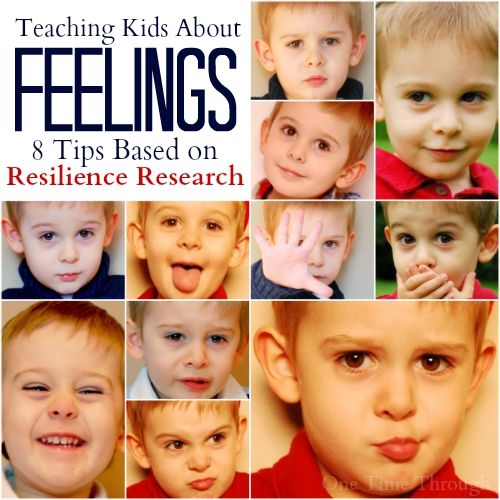
How to control your own emotions
Those who do not know how to cope with their emotions are perceived as ill-bred and unpleasant people. Children are usually forgiven for inappropriate expressions of emotions, but the sooner the child learns to take control of them, the better he will get along with people and the more he will achieve in the future.
How to introduce a child to emotions and feelings?
Be sincere with children
Parents who believe that the manifestation of emotions is a weakness and it is better to ignore them altogether will grow up unhappy, socially unadapted children. Feel free to express your feelings in front of a child: angry, laughing out loud, sad. Let him understand that different emotions are normal.
Pay attention to your child's emotions0009
If you see that the child, for example, is sad, turn to him: “You are sad.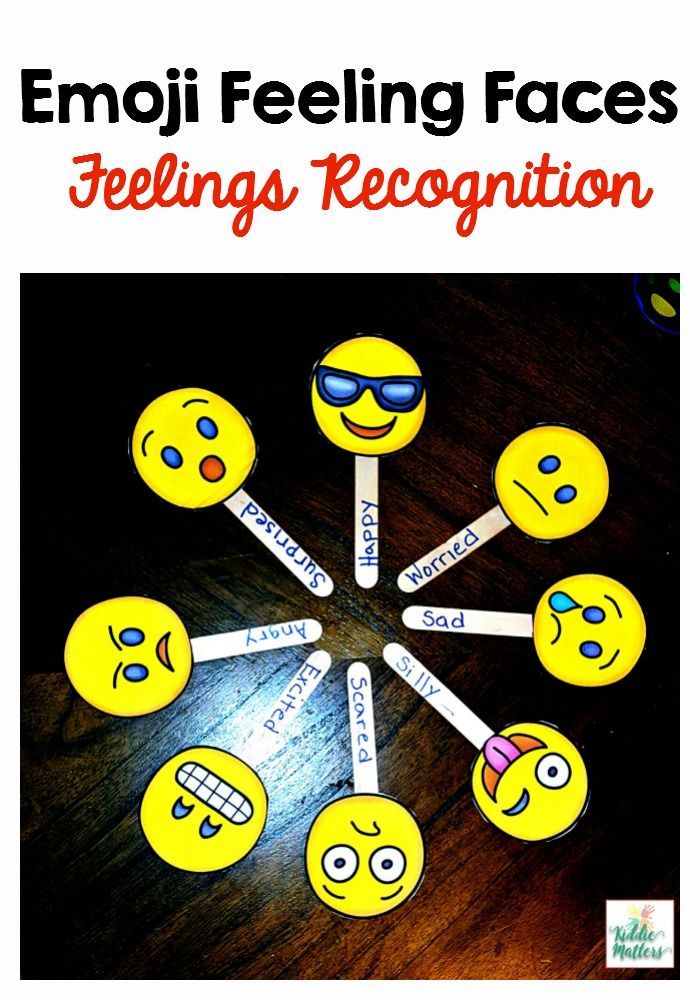 What happened? And what do you think to do with it? It is important that he understands: he will not be punished for what he feels, you are ready to analyze his feelings with him - and you will always tell you how to express them, what to direct them to.
What happened? And what do you think to do with it? It is important that he understands: he will not be punished for what he feels, you are ready to analyze his feelings with him - and you will always tell you how to express them, what to direct them to.
Expand your child's emotional vocabulary
Psychologists have noticed a connection between emotional vocabulary and communication and introspection skills. Use at home more synonyms for words denoting sensations. Address the shades of emotions. For example, the general “evil” may mean “irritated”, “angry”.
Read and analyze literature together
The ability to empathize is formed when a person imagines himself in the place of another. Invite the child to imagine how he would feel if he were in the place of one or another literary hero. What would you do with these emotions? Would you express them or hide them? How would you proceed from them?
Learning emotions with children in an interactive
game format
Take a Free Trial Lesson
Explore the interactive play activities your child will have with Umnaziah's Introducing Emotions course.
Try
The structure of the course "Emotions for children"
10 THEMED LESSON GAMES 30-40 MINUTES EACH
Each lesson is dedicated to one of the situations or emotions. The theory for the lesson is presented in the format of short stories and interactive tasks designed for children aged 6-13.
40 FUN CHALLENGES BUILT INTO THE SCENARIO OF LESSON
Each lesson contains 5-7 tasks to consolidate the material covered. All tasks have a plot and bright illustrations or are presented in the form of a game.
UNLIMITED ACCESS TO ALL COURSE MATERIALS
The child will be able to take the course as many times as he needs. You buy the course once and can return to it even after 5 years.
INTERACTIVE KNOWLEDGE QUIZ GAME
The course ends with an interactive quiz game, for the successful completion of which the child receives a certificate. You will be confident in his knowledge!
You will be confident in his knowledge!
What topics do we study in the course "Emotions for Children"?
Galaxy of Emotions
Joy and Sadness
Fear and Anger
Interest and Surprise
Trust and Aversion
Complex emotions
What is empathy?
Dating cloak
Control helmet
Find yourself
Start training
Examples of tasks for the study of emotions
Get to know the other steps of the Emotional Intelligence for Kids course
"Introducing Emotions" is the first of four steps in the Emotional Intelligence course for children from Umnaziah.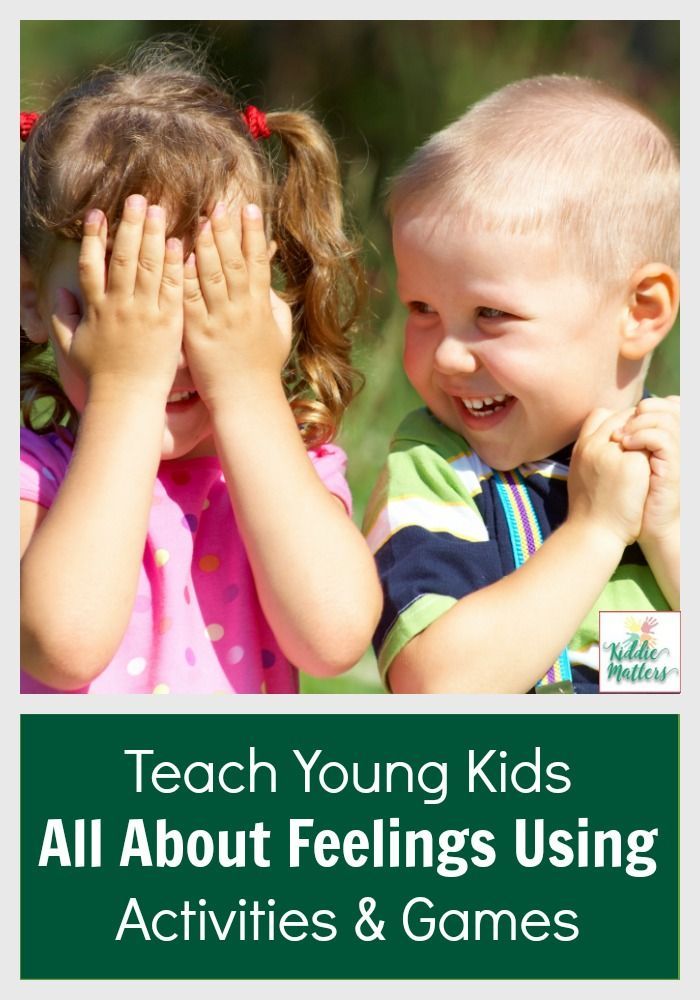 See what topics our students are studying in other levels.
See what topics our students are studying in other levels.
Getting to know emotions
In this course, we will introduce the child to the spectrum of human emotions, try to understand their own feelings, and learn to recognize and recognize the emotions of others. How are curiosity and surprise related? Is it possible to stop worrying at the blackboard and is fear so terrible?
Personality types
The main objective of this course is to show the child the diversity of human characters. We are all different in some ways, but similar in some ways. Why do some guys easily make new acquaintances, while others are reluctant to make contact, and how do different people make decisions?
More
Teamwork
The course is designed for children aged 9-13 and introduces the child to the basic principles of teamwork, teaches them to identify and take into account the strengths of each team member and give constructive feedback. 0057 feedback.
0057 feedback.
More
Difficult situations
The course is designed for children 7-10 years old. During the game, the child empathizes with the characters of the course, helps them cope with conflict situations and learns to predict the possible consequences of their decisions and actions.
More
Start training
41% OFF EMOTIONAL INTELLIGENCE PACKAGE
Discounts up to 41%. The first steps are already available for solution!
Access is permanent and no subscription is required.
How to help your child learn - Child development
Typically, topics such as how the brain works and the effectiveness of children's ways of learning are studied separately or separated.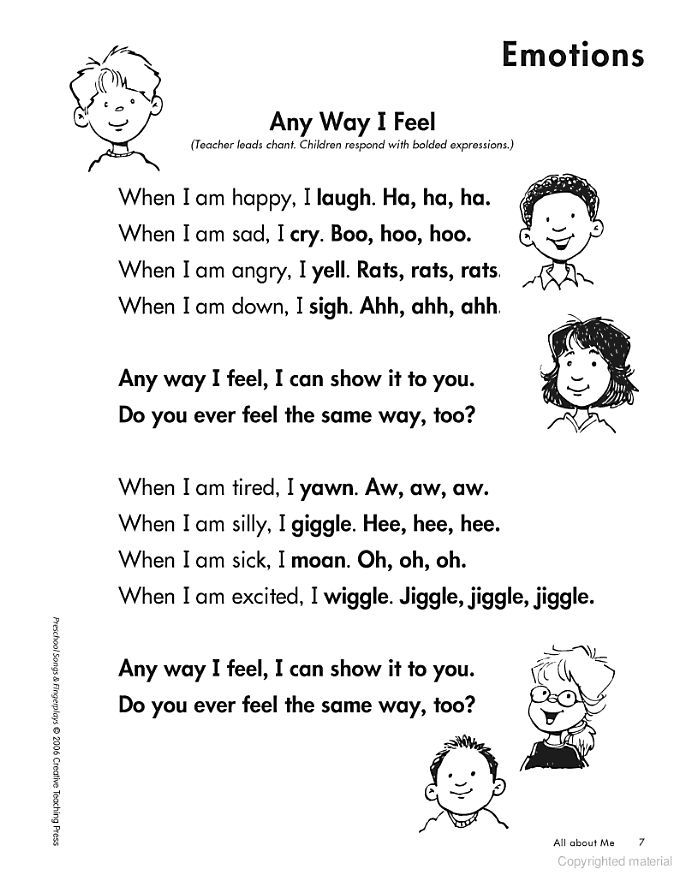 That is why it will be useful to combine knowledge about the work of the brain, visual and auditory memory and various ways of learning. This knowledge is very important because it helps to understand how the brain works and develops, and how our children learn in doing so.
That is why it will be useful to combine knowledge about the work of the brain, visual and auditory memory and various ways of learning. This knowledge is very important because it helps to understand how the brain works and develops, and how our children learn in doing so.
This knowledge can be used in an extremely practical way, namely to help our children cope with their school assignments and study any material that they need.
This method will help the child in the learning process, turning it into a fun play experience, regardless of age. It is about using music and also helping the child to hum what they are learning, make up stories and songs, use visuals - videos, graphics, photos and visual aids that are especially good for learning mathematics.
Teaching your child the alphabet? Bake cookies in the shape of letters. Use them to collect words. Sing a song about the alphabet. Compose it yourself. Encourage your child to compose songs of any subject. Have fun marching to the beat of the music.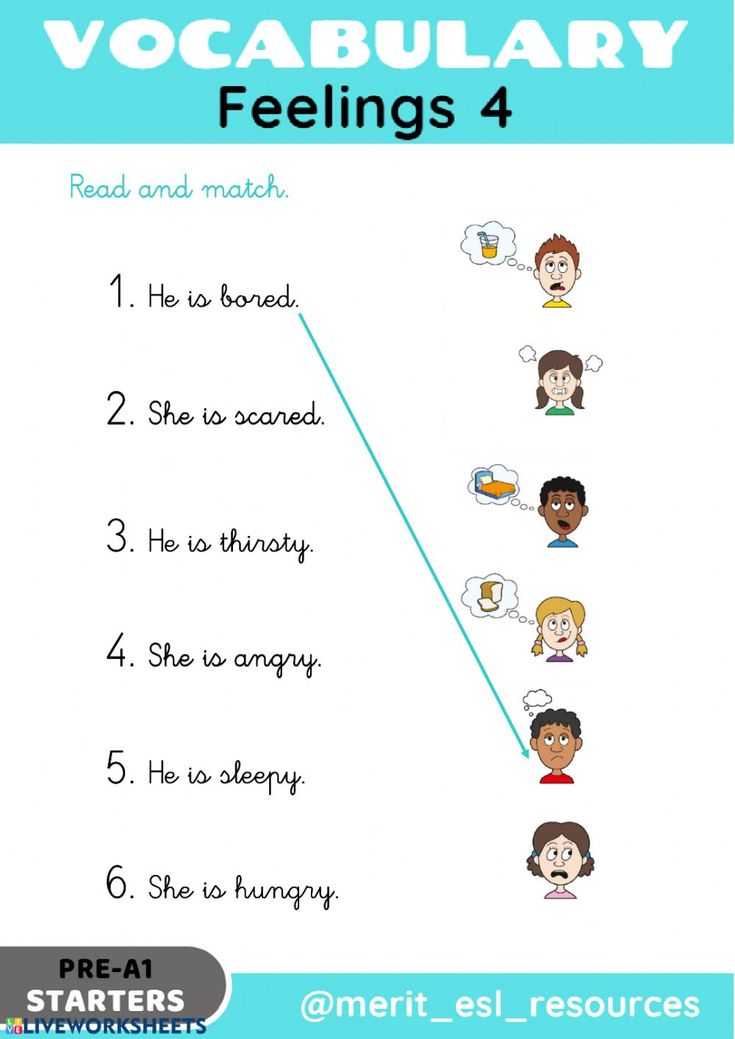 Move around with letters. Cut out big letters from colored cardstock and hang them around your house.
Move around with letters. Cut out big letters from colored cardstock and hang them around your house.
If your child is older and is studying history, find a film about the historical event being studied. You may be able to find a video about its geographical location, that is, the country or city in which it all happened.
Should the child memorize the text from the book? Read it with him. Record your reading on a voice recorder and let the child listen to it in transport (on the way to school). Sing along the material being studied. Write stories about the event you are studying. Imagine the scenes associated with it, or make a small production on this topic.
Try to use all of your child's senses when learning this material. Ask open-ended questions. Let your child imagine what he would do if he were directly involved in these events. How would he feel about it?
Is your child studying mathematics? You can use marbles or cubes to demonstrate the rule you are learning, or even vegetables and fruits that you have on hand. Visual examples work very well for understanding decimal, arithmetic, and fractions. In the same way, you can use cookies in the form of cubes or other geometric shapes to also demonstrate certain rules. Make the cookies very fragrant to involve all the senses in the learning process: smell, touch and sight.
The school is largely visually oriented. Students read the material, they are asked to draw something or write answers to questions. There is also a discussion in the class of material that uses the auditory channel of perception, but still most of the work is based on the visual activity of the brain.
If you give your child the opportunity to move around while learning (kinesthetic component), move to the beat of music, draw, listen and use all the senses, then give him the opportunity to learn in different styles, using the maximum number of parts of the brain.
Do you think the child will be able to forget the material if you do this? In doing so, you will help him a lot to master the material.

